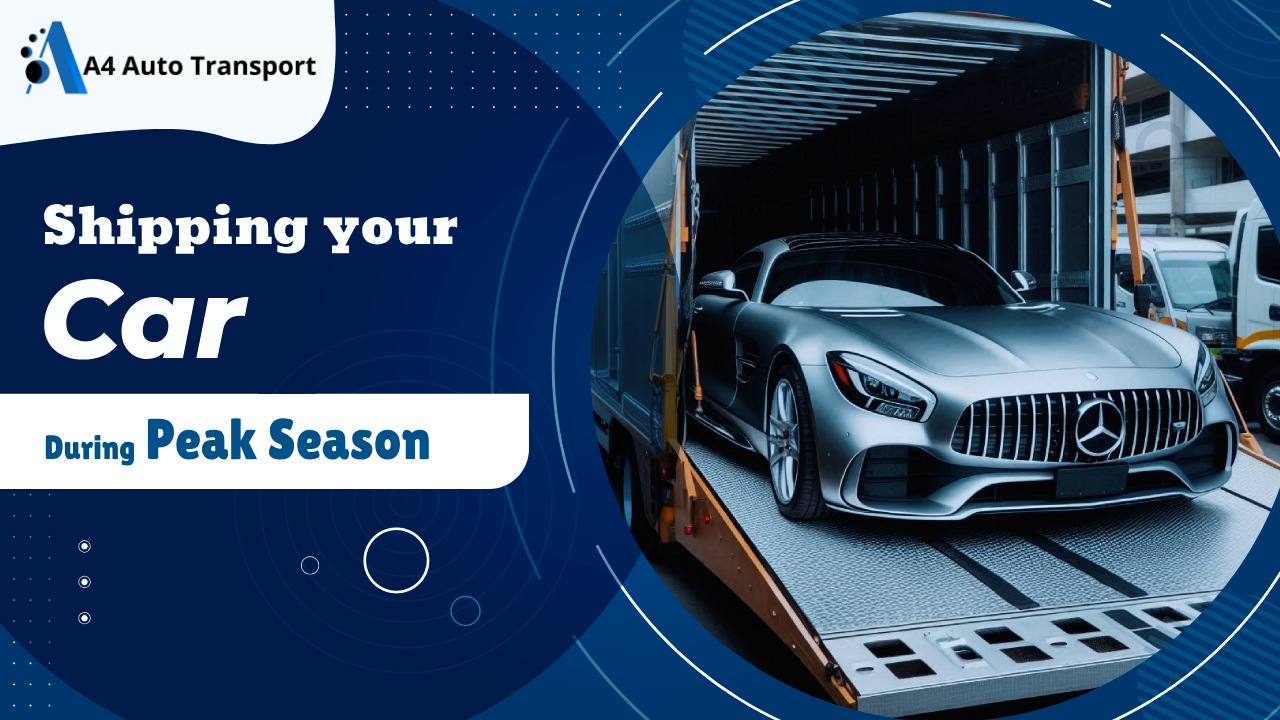Shipping Your Car During Peak Season: Strategies for Avoiding Delays

Car shipping can be a stressful process, especially during peak season when demand is high and delays are common. Whether you’re relocating for a job, sending a car to a student at college, or just purchasing a vehicle from a distant seller, ensuring that your car arrives on time is crucial. Here are some key highlights and strategies to help you avoid delays and ensure a smooth shipping experience during peak season.
Key Highlights
- Booking your car shipment early (ideally between May and September) and being flexible with pick-up and delivery dates can significantly improve your chances of on-time delivery during peak season.
- Choosing enclosed transport over open transport and opting for terminal-to-terminal shipping (if door-to-door service is not essential) can expedite the delivery process.
- Researching reputable car shipping companies, properly preparing your vehicle, and maintaining clear communication with the carrier are crucial for avoiding delays.
Strategies for Avoiding Delays During Peak Season Car Shipping
1. Book Early
One of the most effective ways to avoid delays is to book your car shipment as early as possible. Peak season, typically from May to September, sees a surge in demand for auto transport services. By securing your spot early, you can avoid the last-minute rush and ensure that your vehicle is scheduled for transport well in advance.
2. Be Flexible with Dates
Flexibility can be a significant advantage when shipping your car during peak season. If you have some leeway with your pick-up and delivery dates, you can work around the busiest times and find slots that are less congested. This flexibility can also make it easier to find carriers and potentially reduce costs.
3. Choose the Right Transport Type
There are different types of car transport services available, and choosing the right one can impact the timeliness of your delivery:
- Open Car Shipping: This is the most common and cost-effective option. However, because it is in high demand, it might be more prone to delays during peak season.
- Enclosed Car Shipping: This option offers more protection for your vehicle and might be quicker as it’s less commonly used, but it can be more expensive.
4. Research and Choose a Reliable Transport Company
Not all car transport companies are created equal. Do your research to find a reputable company with positive reviews and a track record of timely deliveries. Check for certifications, insurance coverage, and customer feedback to ensure you’re choosing a trustworthy service provider.
5. Understand the Terms and Conditions
Before booking, make sure you fully understand the terms and conditions of the transport service. This includes the estimated delivery time, insurance coverage, cancellation policies, and any additional fees. Knowing these details can help you avoid unexpected delays and costs.
6. Prepare Your Vehicle
Proper preparation of your vehicle can also prevent delays. Ensure your car is in good working condition, remove any personal items, and document the vehicle’s condition with photos. If your car isn’t operational, inform the transport company in advance, as this might require special handling.
7. Communicate Regularly with Your Transport Company
Stay in regular contact with your transport company for updates on your shipment. Good communication can help you stay informed about any potential delays and allow you to make necessary arrangements promptly.
8. Consider Terminal-to-Terminal Shipping
If door-to-door transport is not crucial for you, consider terminal-to-terminal car shipping. This option can sometimes be faster since carriers can consolidate shipments at central locations, optimizing their routes and reducing the chances of delays.
9. Budget for Potential Delays
Despite your best efforts, delays can still happen. Budget some extra time and money for unforeseen circumstances. Having a buffer can alleviate stress if your vehicle doesn’t arrive exactly when expected.
10. Review and Follow Up
After your car has been shipped, review the service provided and share your feedback. Following up ensures that any issues are addressed, and it helps future customers make informed decisions.
Conclusion
Shipping your car during peak season doesn’t have to be a headache. By planning ahead, choosing the right service, and maintaining open communication with your transport company, you can significantly reduce the risk of delays. Remember, a little preparation goes a long way in ensuring that your vehicle arrives safely and on time. Safe travels!

a4AutoTransport is a group of auto transport researchers and experts that comes in handy for anyone who wants to move their car/vehicle without putting extra miles on the odometer. At a4AutoTransport, We researched over a hundred car shipping companies, interviewed real customers and industry leaders, and collected nearly 500 quotes to find the nation’s best auto transport companies. With our combined 5 years of industry experience and research, we’ll help you find the right car shipper for your budget.
